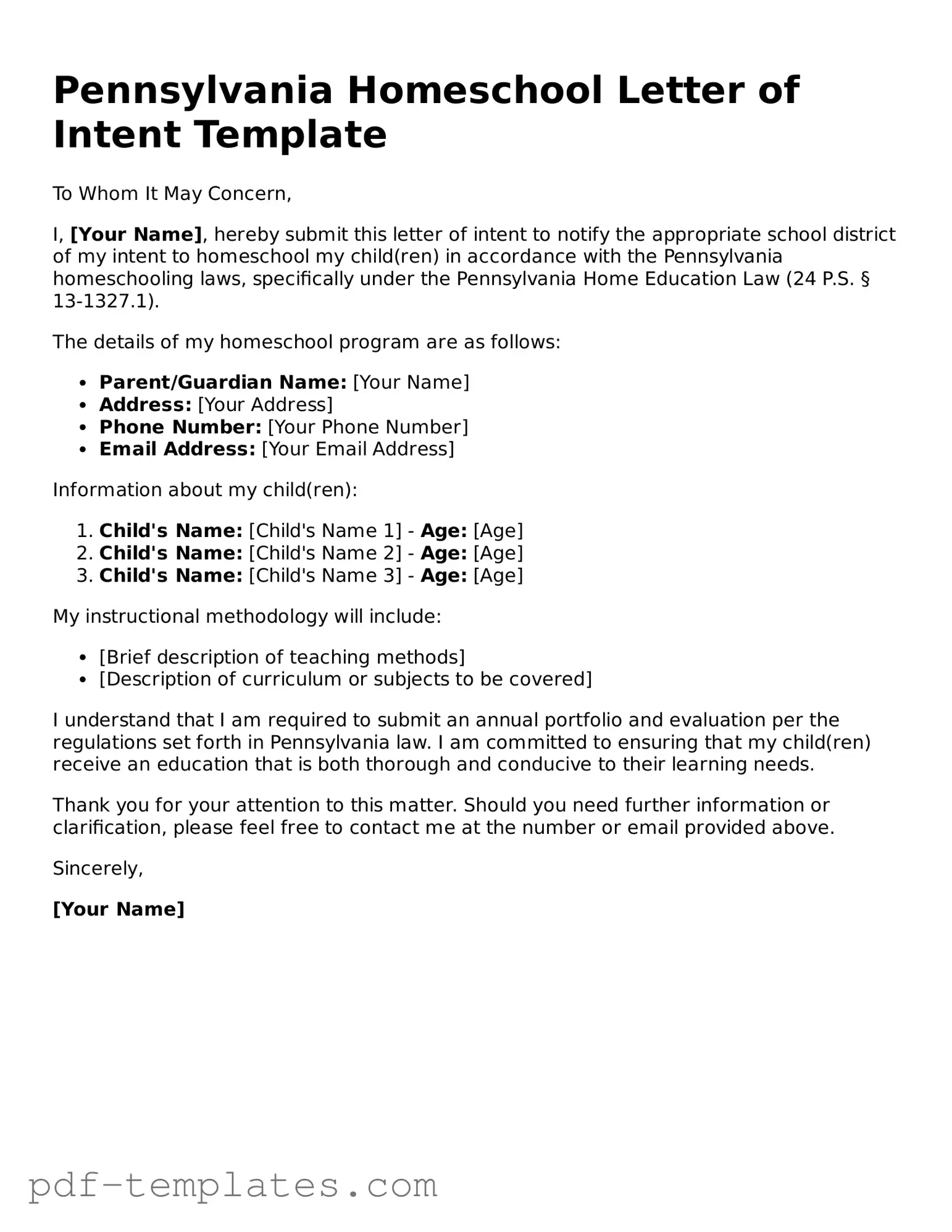The Pennsylvania Homeschool Letter of Intent form is similar to the Notice of Intent to Homeschool form used in other states. This document serves as an official notification to the local school district that a parent or guardian intends to educate their child at home. Like Pennsylvania's form, it typically requires basic information about the student and the educational plan. This ensures that the local education authority is aware of the homeschooling arrangement and can provide any necessary resources or support.
The Texas RV Bill of Sale is a vital document for those involved in the recreational vehicle trade in Texas, serving to legally document the transfer of ownership. Much like other important forms, it must include specific details about the RV and both parties involved in the transaction. For more information on how to properly complete this essential document, you can visit documentonline.org/blank-texas-rv-bill-of-sale/.
Another comparable document is the Homeschool Registration Form, which some states require. This form usually collects similar information, such as the child's name, age, and the educational curriculum being used. By submitting this form, parents formally register their homeschooling efforts with the state, ensuring compliance with local laws. The process helps keep track of homeschooling families and supports the educational framework in place.
The Individualized Education Plan (IEP) is also relevant, especially for families with children who have special educational needs. While the IEP is more detailed and focused on specific learning goals and accommodations, both documents aim to ensure that a child's educational needs are met. Parents must outline how they will address their child’s unique learning requirements, similar to how they would present their homeschooling approach in the Letter of Intent.
The Affidavit of Homeschooling is another document that shares similarities with the Pennsylvania Homeschool Letter of Intent. This affidavit is often required in various states to affirm that parents are providing a suitable education at home. Like the Letter of Intent, it involves a formal declaration of the homeschooling plan and may require the submission of educational materials or curriculum details to the local education authority.
Finally, the Annual Progress Report is akin to the Homeschool Letter of Intent in that it involves communication with the school district. This report typically summarizes the student’s educational progress over the year. It serves to demonstrate that the homeschooling curriculum is effectively meeting the child’s educational needs, much like the initial intent letter establishes the educational framework for the year ahead.
